Here are eight books Battelle for Kids’ leaders are reading as we work to help school systems—in partnership with educators, parents, business leaders, and communities—design quality 21st century learning experiences for all students.
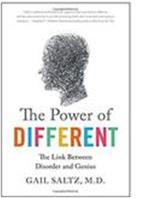 The Power of Different: The Link Between Disorder and Genius
By Gail Saltz (2017)
The Power of Different: The Link Between Disorder and Genius
By Gail Saltz (2017)
As educators, we must thoughtfully consider how traditional learning models, designed in the Industrial Age, do not enable all learners to flourish, fully utilizing their strengths and talents. Psychiatrist and best-selling author Gail Saltz examines the latest scientific evidence and profiles of famous geniuses to document how perceived deficits in certain areas of the brain are directly associated with the potential for great talent. As school systems look for ways to engage all learners in 21st century skills, this book pushes our thinking away from deficit models to strength-based models. In other words, shifting our thinking from a “disorder” to a “difference”-- from “what’s wrong with me” to “what’s right with me?”
The Power of Different is full of stories about individuals who have not only made the most of their conditions, but who have flourished because of them.
Learn more and buy the book.
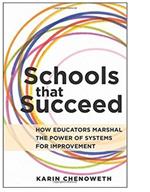 Schools that Succeed: How Educators Marshal the Power of Systems for Improvement
By Karin Chenoweth (2017)
Schools that Succeed: How Educators Marshal the Power of Systems for Improvement
By Karin Chenoweth (2017)
Drawing on her decade-long journey into neighborhood schools where low-income students and students of color are learning at unexpectedly high levels, Karin Chenoweth reveals a key ingredient to their success: in one way or another, their leaders have confronted the traditional ways that schools are organized and have adopted new systems, all focused on improvement. From how they use time to how they use money, schools that succeed combine a deep belief in the capacity of their students to achieve with deliberate systems focused on student needs. As a result, they create vibrant places “where teachers want to teach and students want to learn."
Learn more and buy the book.
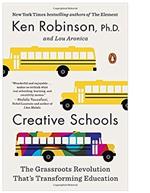 Creative Schools: The Grassroots Revolution That’s Transforming Education
By Ken Robinson, Ph.D. (2016)
Creative Schools: The Grassroots Revolution That’s Transforming Education
By Ken Robinson, Ph.D. (2016)
In
Creative Schools, Ken Robinson, an internationally recognized leader on creativity and human potential, argues for an end to our outmoded industrial educational system and proposes a highly personalized, organic approach that draws on today’s unprecedented technological and professional resources to engage all students, develop their love of learning, and enable them to face the real challenges of the twenty-first century. He focuses on deep learning with a balanced between the 4 C’s (critical thinking, communication, collaboration, creativity) and the significance of carefully implementing challenging curriculum and pedagogy.
Learn more and buy the book.
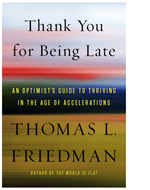 Thank You for Being Late: An Optimist's Guide to Thriving in the Age of Accelerations
By Thomas Friedman (2016)
Thank You for Being Late: An Optimist's Guide to Thriving in the Age of Accelerations
By Thomas Friedman (2016)
This book serves as a field manual for how to write and think about this era of accelerations. Thomas Friedman exposes the tectonic movements that are reshaping the world today and explains how to get the most out of them and cushion their worst impacts. His thesis: to understand the twenty-first century, you need to understand that the planet’s three largest forces―Moore’s law (technology), the Market (globalization), and Mother Nature (climate change and biodiversity loss)—are accelerating all at once. These accelerations are transforming five key realms: the workplace, politics, geopolitics, ethics, and community. Leaders must be innovative, quick to adapt, and be adept at shutting out the noise and accessing their deepest values.
Learn more and buy the book.
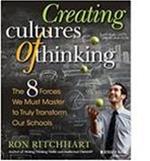 Creating Cultures of Thinking: The 8 Forces We Must Master to Truly Transform Our Schools
By Ron Ritchhart (2015)
Creating Cultures of Thinking: The 8 Forces We Must Master to Truly Transform Our Schools
By Ron Ritchhart (2015)
In
Creating Cultures of Thinking, Ron Ritchart challenges educators to create thinking environments where deep learning can occur—not just for students, but for teachers as well! He outlines how any school or teacher can accomplish this by leveraging 8 cultural forces: expectations, language, time, modeling, opportunities, routines, interactions, and environment. A culture of thinking produces the feelings, energy, and even joy that can propel learning forward and motivate us to do what at times can be hard and challenging mental work.
Learn more and buy the book.
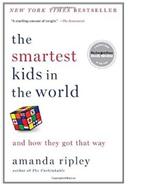 The Smartest Kids in the World: And How They Got that Way
By Amanda Ripley (2013)
The Smartest Kids in the World: And How They Got that Way
By Amanda Ripley (2013)
In a handful of nations, virtually all children are learning to make complex arguments and solve problems they’ve never seen before. They are learning to think, in other words, and to thrive in the modern economy. Inspired to find answers for our own children, author and Time magazine journalist Amanda Ripley follows three Americans embed¬ded in these countries for one year. Their stories, along with groundbreaking research into learning in other cultures, reveal a pattern of startling transformation: none of these countries had many “smart” kids a few decades ago. Things had changed. Teaching had become more rigorous; parents had focused on things that mattered; and children had bought into the promise of education.
Learn more and buy the book.
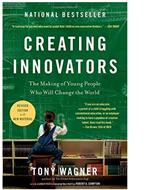 Creating Innovators: The Making of Young People Who Will Change the World
By Tony Wagner (2012)
Creating Innovators: The Making of Young People Who Will Change the World
By Tony Wagner (2012)
In this groundbreaking book, education expert Tony Wagner provides a powerful rationale for developing an innovation-driven economy, and explores what parents, teachers, and employers must do to develop the capacities of young people to become innovators. Wagner identifies a pattern—a childhood of creative play leads to deep-seated interests, which in adolescence and adulthood blossom into a deeper purpose for career and life goals. Play, passion, and purpose: these are the forces that drive young innovators. Wagner then looks more widely at the education system and shows how we can apply this knowledge as educators.
Learn more and buy the book.
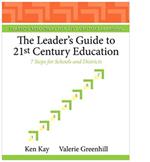 The Leader’s Guide to 21st Century Education: 7 Steps for Schools and Districts
By Ken Kay and Valerie Greenhill (2012)
The Leader’s Guide to 21st Century Education: 7 Steps for Schools and Districts
By Ken Kay and Valerie Greenhill (2012)
How can school leaders transform their districts into 21st century deep learning places? This is the driving question in The Leader’s Guide to 21st Century Education, which offers education leaders seven steps for moving school systems forward in the quest to prepare students for the challenges of the 21st century—with a particular focus on fostering critical thinking, communication, collaboration, and creativity.
Learn more and buy the book.